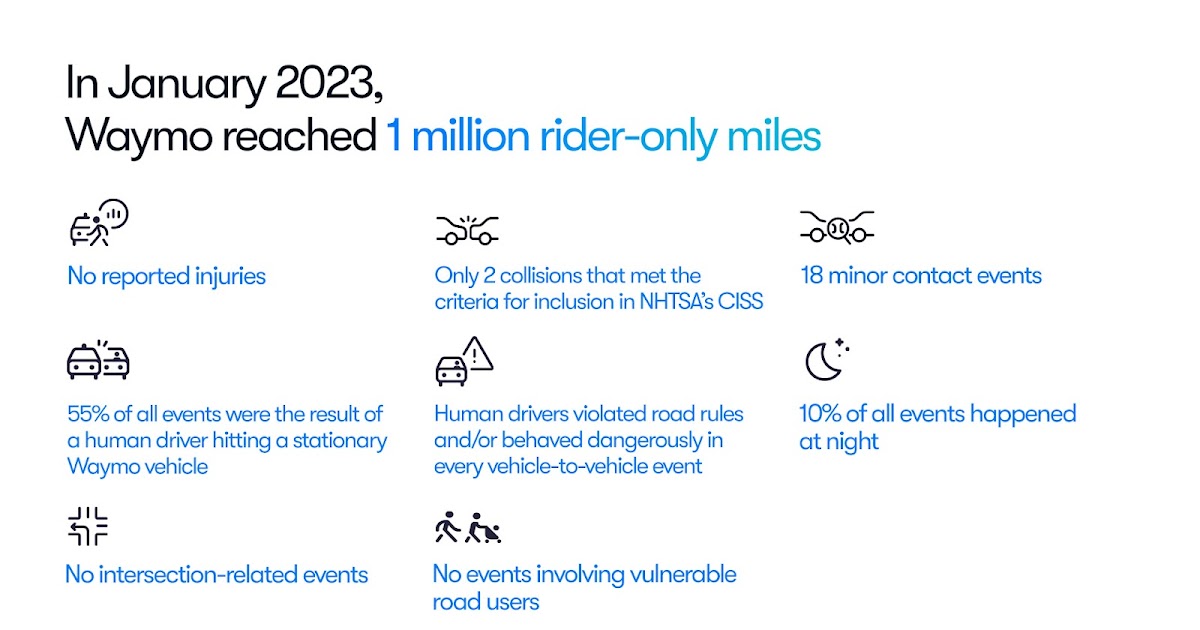
First Million Rider-Only Miles: How the Waymo Driver is Improving Road Safety
Waymo has achieved many global industry firsts. Each time we delight our riders and deliver on our mission safely, we are proudest. In January, we accomplished another first: we exceeded one million miles on public roads with no human behind the wheel. To put this into perspective, this equates to 40 trips around the Earth, or over 80 years of driving for the average American. But this number is not a meaningful measure of progress, without context....








